Introduction
Autism spectrum disorder (ASD) is a neurodevelopmental condition that presents various challenges in social interaction, restricted interests, and repetitive behaviors. The global prevalence of autism is on the rise, emphasizing the need for a deeper understanding and more effective support structures. In Australia, where significant progress has been made in autism support, it is estimated that 1 in 70 individuals are on the autism spectrum.
This article explores the comprehensive approach to autism diagnosis in Australia, the importance of early intervention, the impact of awareness and screening on prevalence rates, regional variations in autism prevalence, gender differences in diagnosis, factors influencing autism prevalence, future projections for autism diagnoses, and the challenges and opportunities in addressing autism. By recognizing the diverse needs of individuals with autism and providing guidance and resources, we can work towards creating an inclusive and supportive environment for the autism community.
Global Autism Prevalence Rates in 2023
Autism spectrum disorder (ASD) is an enduring neurodevelopmental condition that presents a constellation of challenges in social interaction, restricted interests, and repetitive behaviors. In Australia, a nation that has made significant headway in autism support, it's estimated that 1 in 70 individuals are on the autism spectrum. This reflects a global trend of rising autism prevalence, emphasizing the need for a deeper understanding and more effective support structures.
The approach to autism diagnosis in Australia is comprehensive, involving a team of pediatricians, psychologists, speech therapists, and occupational therapists. This multidisciplinary assessment, which includes input from parents, caregivers, and educators, along with child behavior observation, is geared towards early detection, which is crucial for improving developmental outcomes. Australian support for autism is further bolstered by the National Disability Insurance Scheme (NDIS), which offers customized plans encompassing early intervention strategies.
Early interventions target skill areas like communication, social interaction, and sensory processing, all of which are vital for a child's growth and functioning.
In addition to governmental support, numerous non-profit organizations and community services provide therapy, parent training, and support groups, ensuring that families have the understanding and tools necessary to support their children's needs. Australia's commitment extends to ensuring the right to education for those with autism, advocating for inclusive educational practices that nurture every child's potential.
Despite the strides in awareness and intervention, challenges persist in diagnosis, access to interventions, inclusive education, employment opportunities, and social acceptance. These aspects are pivotal in shaping an inclusive and supportive environment for individuals with ASD, as echoed by experts such as Dr. Zafar Rasheed. The journey towards an empowered and understanding society is ongoing, with each step forward shining a light on the importance of recognizing and supporting the diverse needs of individuals with autism.
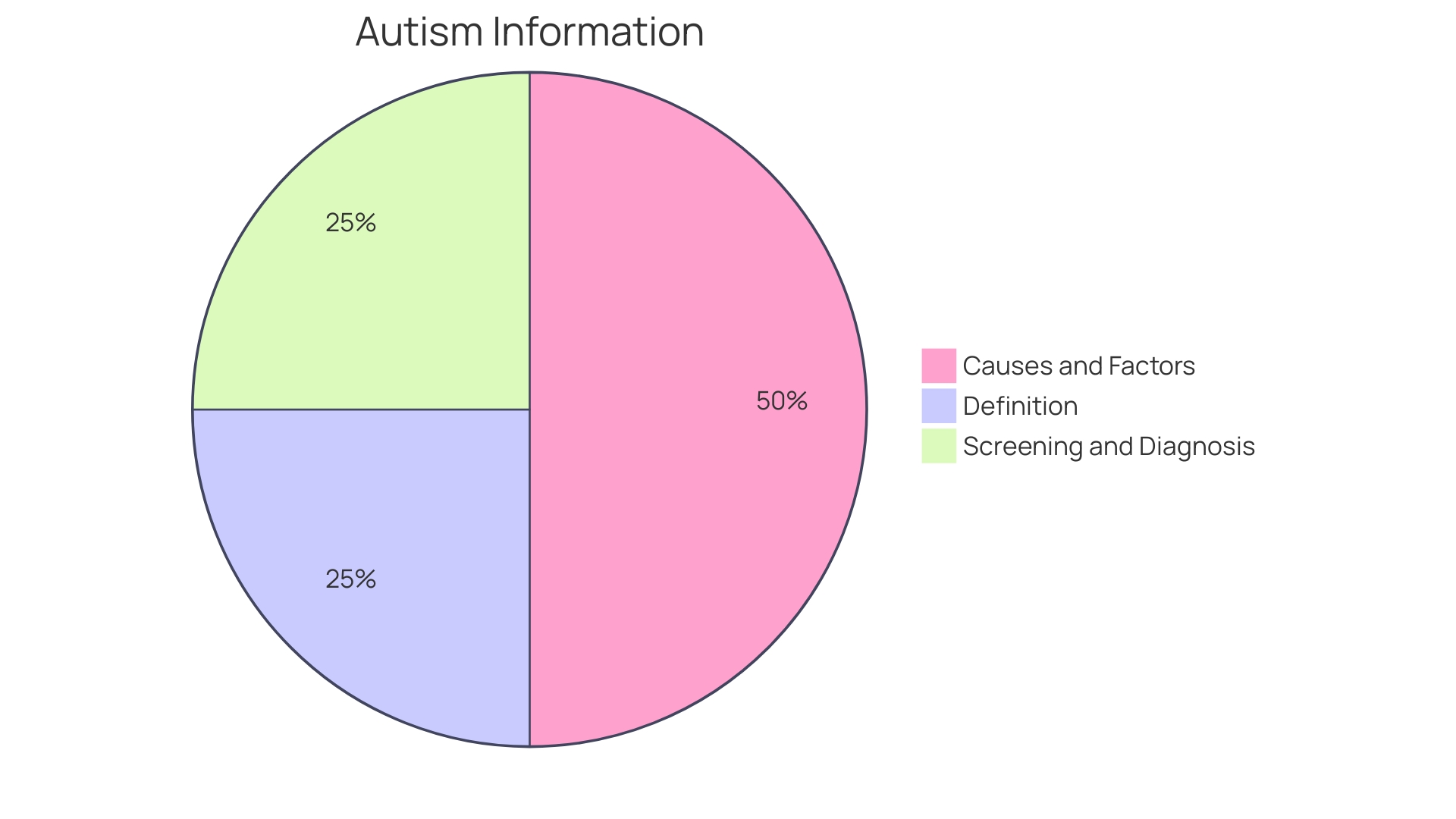
Historical Trends in Autism Prevalence
Tracking the history of autism prevalence provides valuable insight into how awareness and diagnostic practices have shaped our understanding of the spectrum. Over the years, there's been a notable increase in diagnosed cases, reflecting advancements in identification and an evolving appreciation for the diversity of neurodevelopmental conditions. In Australia, for instance, the approach to autism spectrum disorder (ASD) diagnosis is thorough, involving multidisciplinary teams and considering input from various sources, such as caregivers and educators.
This comprehensive assessment ensures that individuals receive the support they need from an early age, which is critical for optimal development and integration into society.
With the backing of systems like the National Disability Insurance Scheme (NDIS), Australia demonstrates a commitment to personalized care, offering resources like early intervention programs that focus on crucial areas including communication, social skills, and behavior management. This support is not only governmental; many community services contribute to the collective effort, providing therapy, training, and support groups to families navigating ASD.
Furthermore, the dedication to ensuring educational rights for all children, including those with autism, is a testament to the country's values of inclusivity. The increase in autism prevalence is not just a statistic; it's indicative of a broader, more inclusive understanding of neurodiversity. As Dr. Zafar Rasheed notes, the recognition and understanding of autism in Australia have significantly evolved, transforming from a state of misdiagnosis to one where there is a concerted effort to support and embrace individuals with ASD.
This progression mirrors global trends, where the refinement of diagnostic criteria and heightened awareness contribute to more accurate identification and support. Such advancements underscore the importance of understanding historical trends in autism, as they reflect society's growing commitment to creating an environment that respects and supports the neurodivergent community.
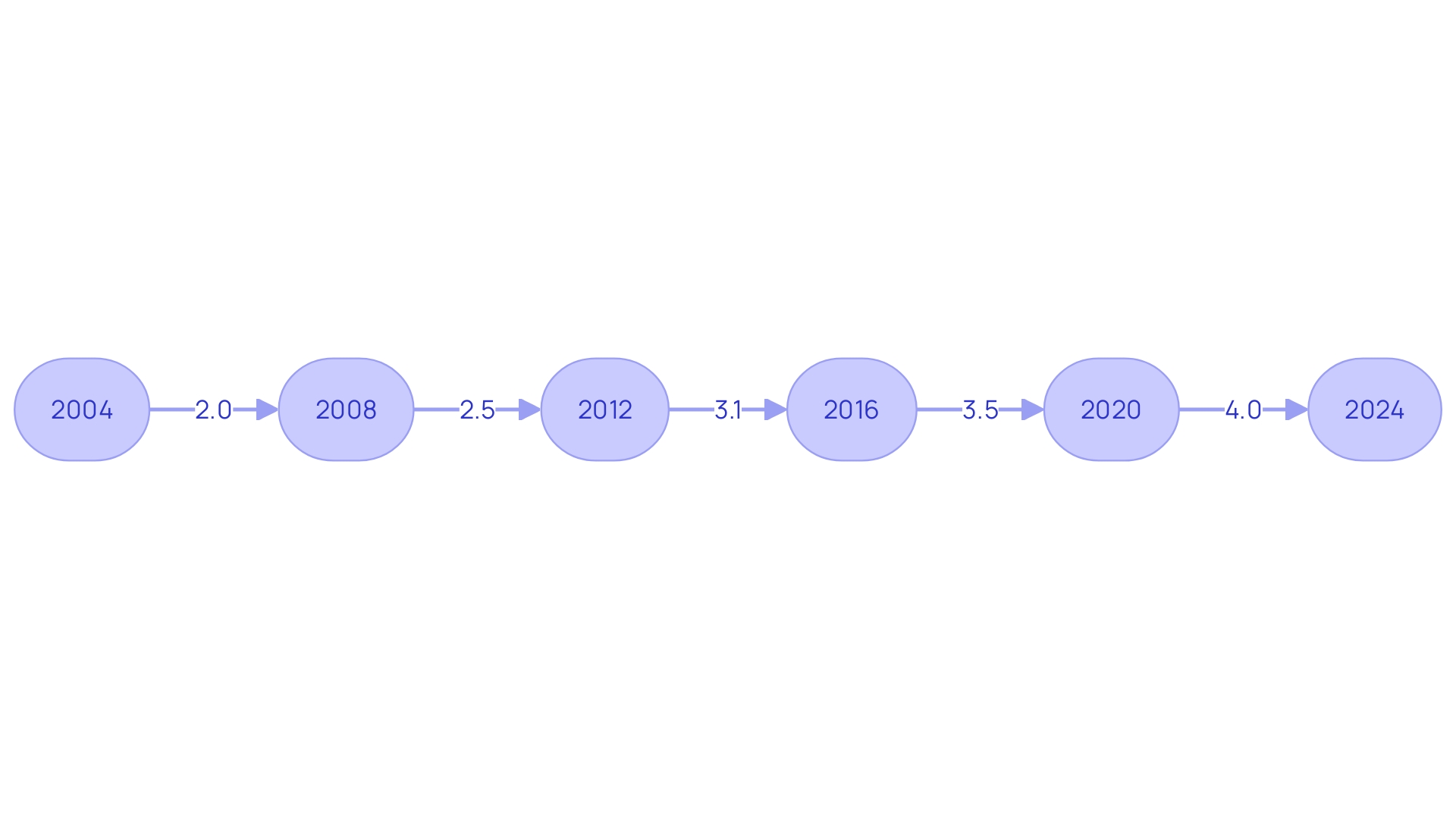
Factors Influencing Autism Prevalence
Understanding the prevalence of autism requires a comprehensive look at various contributing factors. A case study published in the Journal of Personalized Medicine highlighted the importance of genetic and environmental influences by examining dizygotic twins with "level 3 severity" autism spectrum disorder, emphasizing the need for substantial support. Dizygotic, or fraternal twins, share a similar genetic makeup to ordinary siblings but have distinct characteristics, showing that genetics play a crucial role in autism development.
Environmental factors are also significant but complex to analyze due to their broad and transient nature. As one researcher put it, "Technologies to understand [the] environment haven't been able to catch up... the environment captures a broad range of factors that can include everything from pathogen exposure in utero to trauma, air quality, poverty, and a parent’s age." These factors are challenging to quantify, such as the number of colds a mother had during pregnancy or the pesticides used on a family's lawn.
In Australia, the approach to autism diagnosis and support reflects the importance of early detection and intervention, which are critical for better outcomes. The comprehensive assessment process involves a team of professionals and gathers information from various sources. The National Disability Insurance Scheme (NDIS) plays a pivotal role in providing personalized support plans, including early intervention programs focusing on communication, social skills, and behavior management.
The neurodiversity movement further informs our understanding of autism, acknowledging the validity of individuals with different neurological makeups. It introduces the concept that while some people are neurotypical, others are neurodivergent, with conditions like autism or ADHD. This perspective is reshaping scientific and medical thinking, advocating for the inclusion and education of all individuals, including those with autism.
While studies, including those supported by grants like R01ES026993, adhere to ethical standards and necessary approvals, they also underscore the complexity of determining autism's prevalence. For instance, while twin studies indicate a high genetic component in conditions like schizophrenia, the actual concordance rates and historical evidence suggest that genetics are not the sole determinant. Similarly, the intricate interplay between genetic predisposition and environmental exposure shapes the manifestation of autism, necessitating ongoing research to more thoroughly understand these dynamics.
Regional Variations in Autism Prevalence
Autism Spectrum Disorder (ASD) is a complex neurodevelopmental condition characterized by a wide range of symptoms and abilities. As such, the prevalence of autism can show significant regional variations. A closer look at these differences reveals a multifaceted issue, encompassing the availability of diagnostic services, cultural perceptions, and support infrastructure.
An in-depth study by the Child of the North and the Center for Young Lives highlights a crisis in children’s autism assessment, emphasizing the importance of a needs-led approach over a diagnosis-led system. Their report advocates for early identification and timely support, which is crucial for preventing long-term adverse outcomes like mental health issues and educational exclusion. In Australia, the comprehensive assessment process involves professionals from various fields, including pediatricians and speech therapists, and is supported by the National Disability Insurance Scheme (NDIS).
This personalized support is critical, as early intervention can significantly enhance a child's development and family well-being. Despite advancements, challenges persist, such as ensuring inclusive education and societal acceptance. Recent research, including a study by UC Davis MIND Institute and the Baby Siblings Research Consortium, contributes to our understanding of autism's recurrence in families and underscores the need for continued support and awareness.
The recognition of autism has evolved over time, leading to improved identification and support for those on the spectrum. It is estimated that 1 in 70 Australians are on the autism spectrum, reflecting the condition's widespread impact. Such insights emphasize the necessity for a global and inclusive approach to autism support and services.
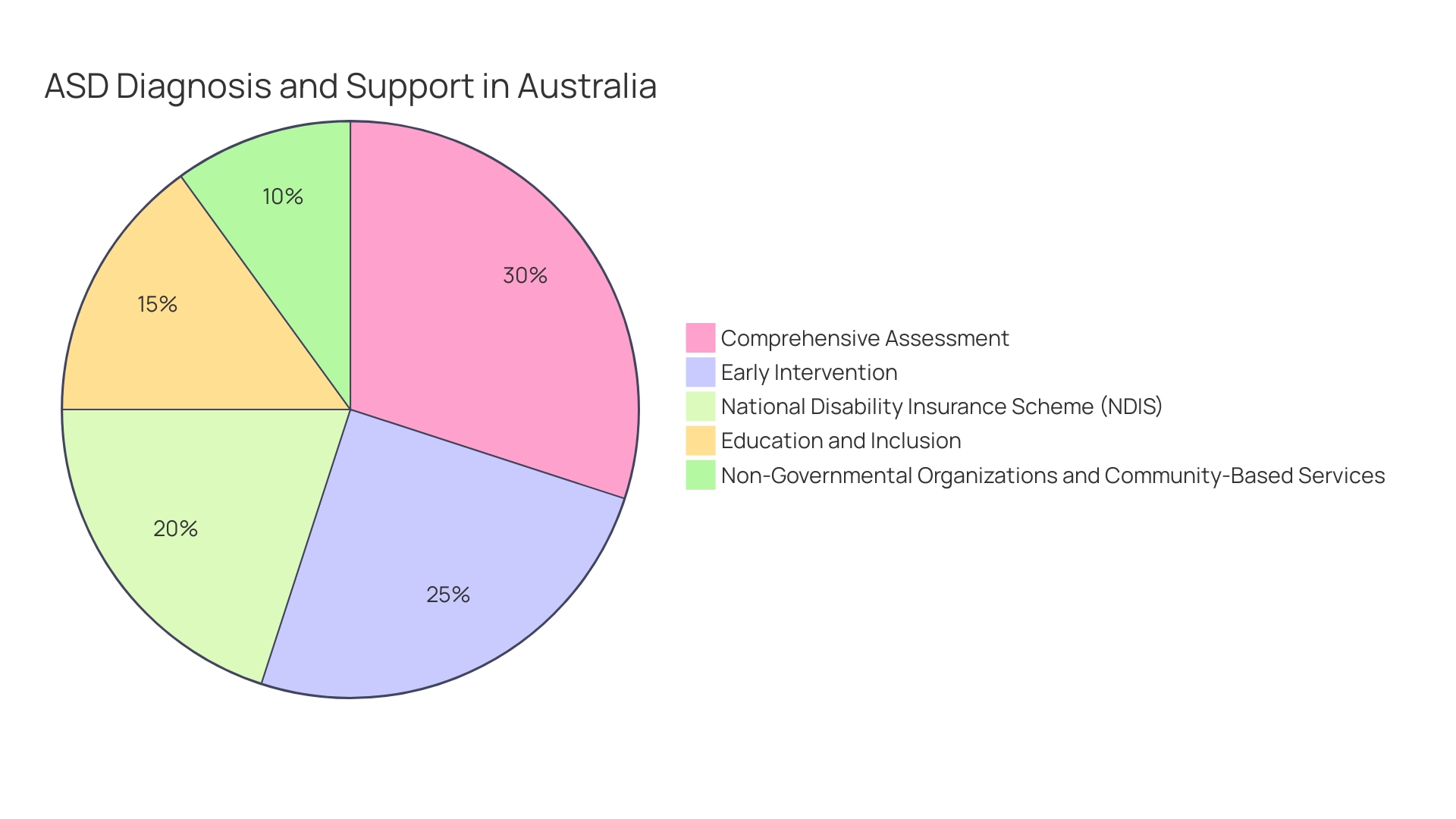
Gender Differences in Autism Diagnosis
The nuances of autism diagnosis across genders reveal a complex interplay between biological sex, gender expectations, and societal norms. While boys are often diagnosed with autism more frequently, emerging research indicates that girls and women may present with autism differently, sometimes leading to underdiagnosis or misdiagnosis. This discrepancy is partly due to camouflaging, a set of strategies used to mask or compensate for autistic traits, which can be more common in females.
Girls might rehearse social interactions or mimic others to blend in, making their autism less apparent to observers and healthcare professionals.
In addition, there is a growing recognition of the intersection between autism and gender diversity. According to a 2019 report from the National Gender Service, at least 34% of individuals assessed for gender services exhibited signs of autism, and this percentage has been increasing. This data highlights the importance of considering gender diversity when diagnosing and supporting autistic individuals.
Understanding and addressing these differences in diagnosis are crucial. The failure to recognize autism in girls and women can lead to a lack of support and a misunderstanding of their experiences, perpetuating myths and misinformation. By broadening our knowledge and adjusting diagnostic criteria to be inclusive of different gender presentations, we can ensure that all individuals on the autism spectrum receive the appropriate support and recognition they need.
Impact of Awareness and Screening on Prevalence
As the understanding and recognition of autism spectrum disorders (ASD) expand, so too do the reported prevalence rates. This increase can largely be attributed to enhanced awareness campaigns and advancements in diagnostic screening. Experts like Dr. Amanda Kelly, the president and CEO of Firefly Autism, emphasize celebrating the uniqueness of autism and increasing public knowledge about the condition.
The rise in diagnoses is not necessarily indicative of a surge in incidence but rather an improvement in identifying those who have always been part of our communities.
The evolution in perception and diagnosis of autism is reshaping the scientific and medical approach to neurodiversity. Autism, once narrowly depicted in media, is now recognized as encompassing a range of conditions with diverse manifestations, from social interaction challenges to atypical behavioral patterns. This shift in understanding is crucial in advocating for and supporting early intervention strategies.
Statistics underline the critical role of early detection. For instance, in Australia, the comprehensive assessment process involves a multidisciplinary team and emphasizes the importance of early childhood diagnosis for better developmental outcomes. The National Disability Insurance Scheme (NDIS) further underscores this by providing tailored support for early intervention, highlighting the significance of timely action in enhancing a child's development.
The global community, too, is actively engaging in conversations about autism, moving from mere awareness to fostering thriving environments for autistic individuals. Initiatives like the World Autism Awareness Day, orchestrated by the United Nations and the Institute of Neurodiversity (ION), offer platforms for autistic people worldwide to share their experiences and insights.
In conclusion, the increase in autism prevalence rates is a testament to the progress made in awareness and screening. This progress, while highlighting the need for early intervention, also calls for a continuous commitment to education, support, and inclusion for individuals with autism and their families.
Future Projections for Autism Diagnoses
As we look to the future, it's critical to understand the evolving landscape of autism diagnoses. Evaluating the trends and projections for the prevalence of autism is key to navigating the challenges and seizing the opportunities that will arise. The Centers for Disease Control and Prevention (CDC) reports a consistent increase in autism rates over the past two decades.
Experts, like Dr. Amanda Kelly, attribute this rise to heightened awareness and refined screening methods. She emphasizes the importance of recognizing and celebrating the uniqueness of individuals with autism.
Demographic shifts and population dynamics play a significant role in shaping the future of autism support and services. According to Sandra Johnson, a demographer at the Census Bureau, the United States has witnessed population changes that will likely persist, impacting the pace of population growth and, consequently, the resources required for individuals with autism. The updated 2023 National Population Projections reflect a slower growth rate, influencing how services are planned and policies are formed.
The field of occupational therapy offers insights into effective interventions. With over two decades of experience, a professor from the New York Institute of Technology notes that while early intervention is common, the transition to K-12 education brings changes in services. It's essential to continue supporting individuals with autism through adaptable educational services.
Recent research in JAMA Psychiatry reveals a substantial increase in autism diagnoses among adults on Medicaid, particularly those aged 25 to 34. This data underscores the need for ongoing support across the lifespan.
In light of these factors, it's clear that proactive planning and resource allocation are crucial to meet the needs of the growing autism community. By embracing the neurodiversity movement, which recognizes and values different brain make-up, society can work towards a more inclusive environment for everyone.
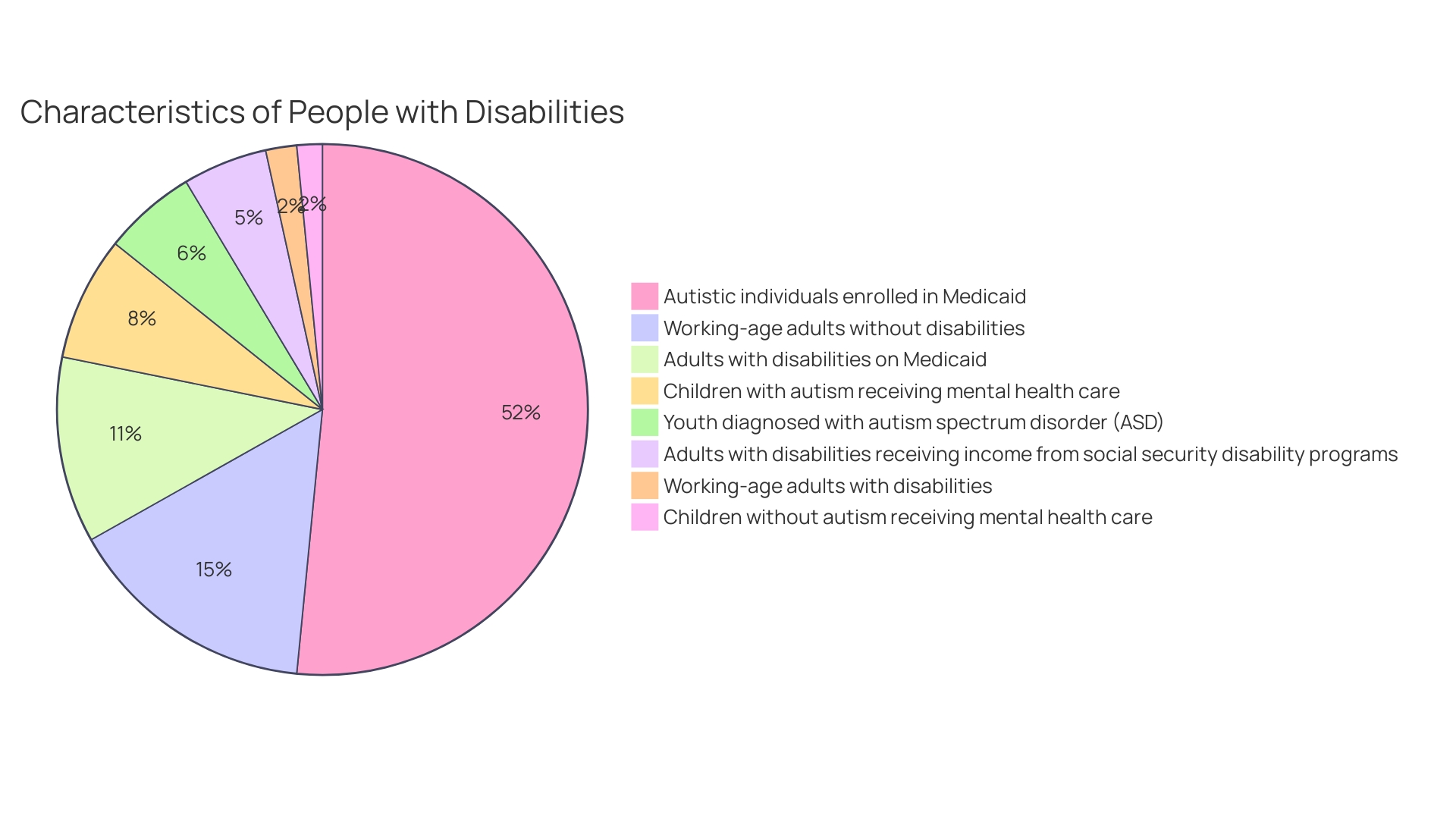
Early Intervention and Its Importance
Autism spectrum disorder (ASD) is not merely a set of challenges; it's a unique journey for each individual, characterized by distinctive communication styles, social interactions, behaviors, and learning methods. With an estimated 31-55% of individuals with ASD also grappling with intellectual disabilities, early intervention stands as a beacon of hope, aiming to level the playing field and foster a society where every child has the opportunity to thrive.
The path to a fair race for individuals with autism begins with acknowledging their unmet needs and celebrating the strengths they bring to their communities. It's a delicate balance of reducing stressors and ensuring a robust support system for caregivers, thereby nurturing a conducive environment for the healthy growth and mental well-being of these children. As the Canadian Child Psychiatrist Dr. David (Dan) R. Offord once said, "I do not mind if my children are in a race as long as the race is fair."
Embracing this ethos, we see the profound impact of early detection and strategic interventions that support not just the children but their families as well.
Current advances in autism research, backed by findings from randomized controlled trials, pave the way for innovative practices in early intervention. Efforts are underway to integrate autism screening seamlessly into routine healthcare visits, allowing for swift identification and referral. This proactive approach has the potential to alter life trajectories, equipping individuals with the tools they need for meaningful participation in academic and community settings.
Reflecting on the words of a researcher, "We’re starting to learn about the governing dynamics that regulate the transition from risk to the actual appearance of the first symptoms of ASD. Early diagnosis opens the possibility of early intervention and optimal outcomes." It is this understanding that fuels the drive to ensure that early intervention is not only prioritized but tailored to meet the diverse needs of the autism community, supporting their journey towards independence and inclusion.
Global and Regional Prevalence Statistics
Autism spectrum disorder (ASD) continues to be a vital public health concern, impacting individuals and families across Australia and globally. The prevalence of ASD is striking, with current estimates indicating that approximately 1 in 70 Australians are on the spectrum. This statistic highlights the growing recognition and diagnosis of autism in the region, especially when considering that just a few decades ago, autism was often misdiagnosed or misunderstood.
Now, with improved diagnostic criteria and heightened awareness, the identification of individuals with ASD has become more accurate.
The rise in autism rates prompts a deeper exploration into the supports available for individuals with ASD and their families. Australia has made commendable advancements, particularly with the implementation of the National Disability Insurance Scheme (NDIS). This nationwide system has been designed to provide funding for disability-related services, including crucial early intervention for children with autism.
Personalized support plans are developed to cater to the unique needs and goals of each individual, focusing on enhancing communication, social skills, and adaptive abilities.
Moreover, the educational landscape for children with autism has seen significant evolution. It is now widely acknowledged that education is a fundamental right for all, including those with autism, as it lays the foundation for nurturing every child's potential. The inclusion of students with autism in mainstream education necessitates a more substantial investment to ensure a better educational experience for all children.
With the Australian Education Union's 2023 report showing a 29 percent increase in students with disabilities in public schools since 2015, the urgency for inclusive educational reform is clear.
Challenges, however, still persist. Access to appropriate interventions, inclusive education settings, employment opportunities, and societal acceptance are areas in need of ongoing attention and improvement. As Australia continues to work on these fronts, it is essential to consider the implications of policy changes.
For instance, recent news from the Sydney Morning Herald suggests that the high autism rates in Australia may be influenced by financial incentives created by the NDIS, leading to a prevalence that outpaces the global average. This underscores the importance of ensuring that support systems like the NDIS are utilized effectively and that strategies are in place to prevent any unintended consequences.
In summary, understanding the prevalence and impact of autism is critical for shaping policies and interventions that support individuals with ASD. As Australia navigates these challenges, the collective efforts to create an inclusive and supportive environment for individuals with autism resonate globally, reflecting a commitment to recognizing and addressing the needs of the autism community.
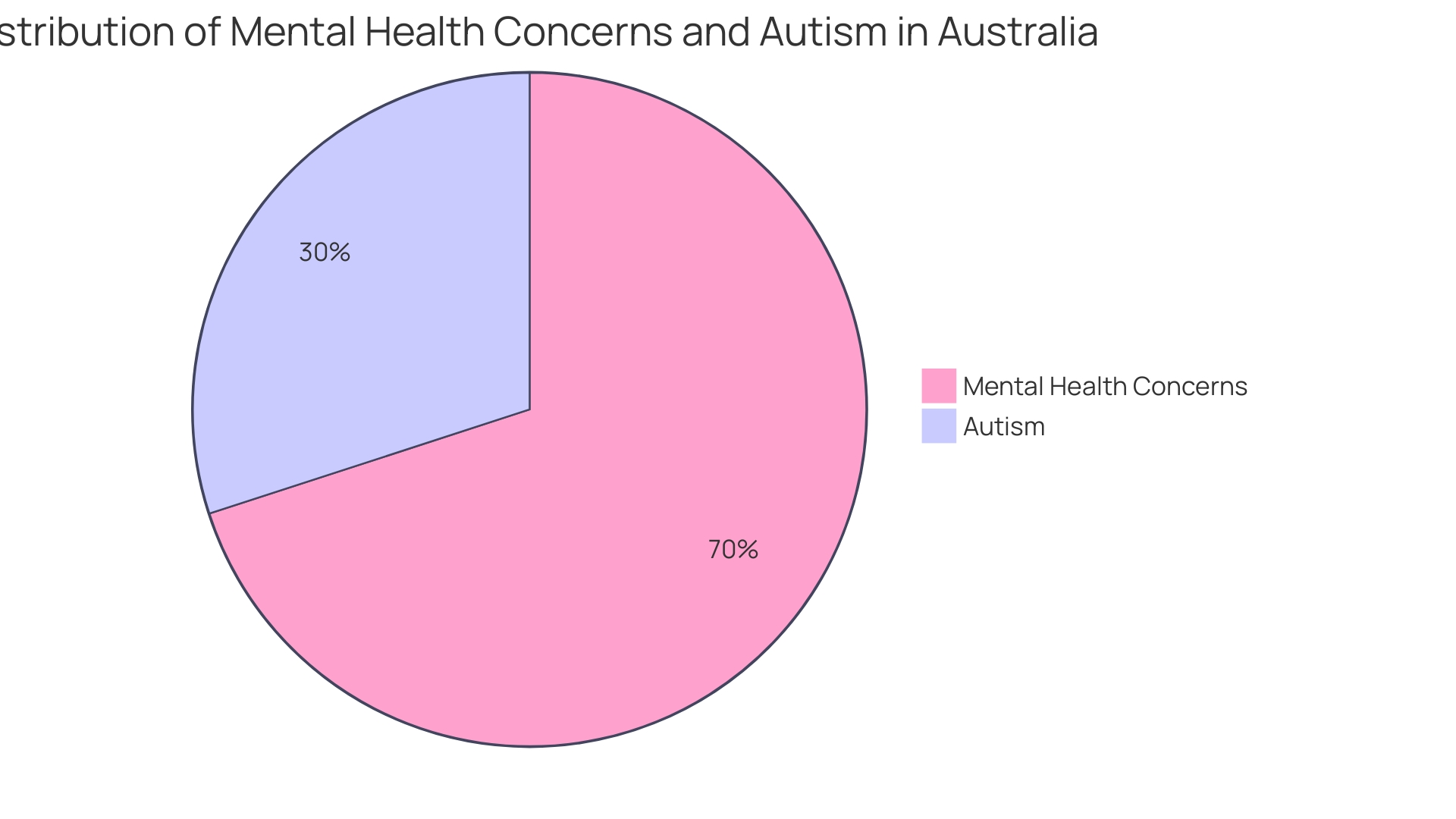
Challenges and Opportunities in Addressing Autism
Autism presents a unique set of challenges and opportunities, requiring a multi-faceted approach for effective support. The essence of this effort lies in recognizing the unmet needs and the strengths individuals with autism bring to their communities. As we strive for inclusivity, it's crucial to alleviate chronic stress and ensure caregivers have the necessary resources for fostering healthy development and family well-being.
Statistics reveal that around 1 in 70 people in the UK is autistic, translating to approximately 1 million individuals. Despite the desire to work among the autistic population, employment rates are dishearteningly low, with only 3 in 10 working-age autistic adults employed. This is in stark contrast to the 8 in 10 employment rate for non-disabled individuals.
Moreover, autistic people experience the largest pay gap amongst disability groups, earning a third less on average.
A strengths-based approach is vital in countering these issues. It emphasizes the diverse talents and capabilities of individuals on the autism spectrum, rather than focusing solely on their challenges. Such an approach can optimize learning and professional development, and has been shown to be beneficial in various settings.
Recent initiatives have sought to improve the autism employment rate by engaging employers, organizations, and stakeholders to identify barriers and develop strategies to overcome them. The aim is to significantly enhance employment opportunities for autistic individuals within the next five years.
Furthermore, the neurodiversity movement calls for a paradigm shift in how we perceive autism. Rather than viewing it as an illness, it encourages us to recognize autism as a facet of human diversity and to address the discrimination and stigma that autistic individuals face. This perspective aligns with the social model of disability, which focuses on societal accommodations and support, rather than the medical model's emphasis on 'fixing' the individual.
In the realm of healthcare, innovative solutions, such as an augmented reality (AR) application designed to accommodate the sensory sensitivities of autistic patients during dental visits, highlight the potential for technology to create more comfortable and accessible experiences.
The Interagency Autism Coordinating Committee (IACC) continues to play a pivotal role in advancing autism research and services by fostering collaboration among federal agencies and stakeholders. This inclusive approach aligns with the sentiment that societal equity is akin to ensuring a fair race for all children, including those with disabilities.
Ultimately, the collective efforts of researchers, clinicians, educators, policymakers, and the community are essential in creating an environment where individuals with autism are empowered to lead fulfilling lives. By capitalizing on strengths, innovating solutions, and promoting inclusive employment, we can move closer to a society that fully embraces and supports the neurodiverse population.
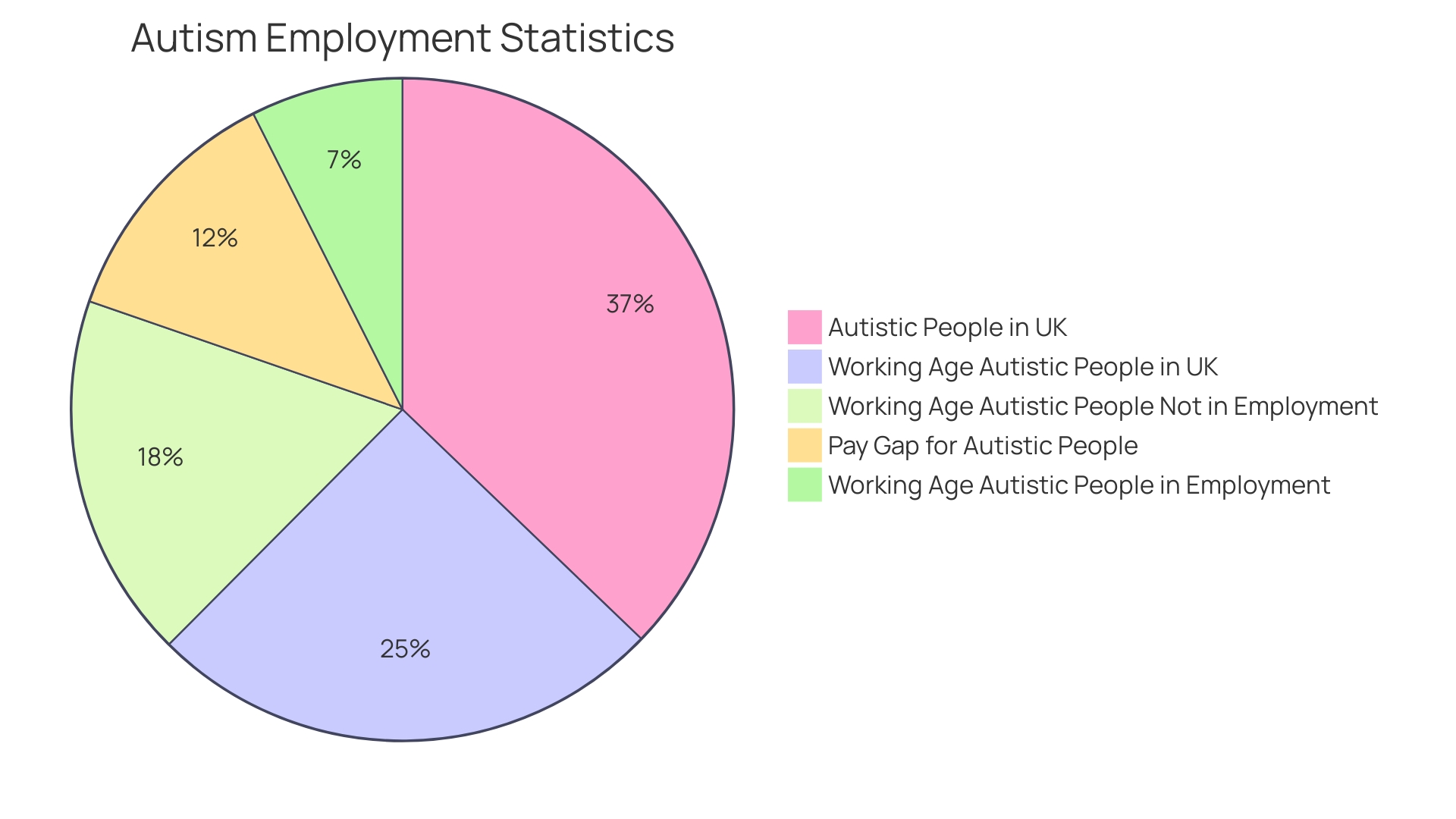
Conclusion
In conclusion, the comprehensive approach to autism diagnosis in Australia, supported by a multidisciplinary team and input from parents and caregivers, plays a crucial role in early detection and intervention. Challenges persist in areas such as diagnosis, access to interventions, inclusive education, employment opportunities, and social acceptance. However, experts and organizations continue to advocate for an inclusive and supportive environment for individuals with autism.
Regional variations in autism prevalence highlight the importance of a needs-led approach and early identification. Gender differences in autism diagnosis underscore the need for a nuanced understanding of how autism presents across genders. The impact of awareness and screening on prevalence rates is significant, calling for a continuous commitment to education, support, and inclusion for individuals with autism and their families.
Looking to the future, proactive planning and resource allocation are necessary to meet the needs of the growing autism community and create a more inclusive environment. Early intervention stands as a beacon of hope, aiming to level the playing field and foster a society where every child with autism has the opportunity to thrive.
Addressing autism requires a multi-faceted approach that recognizes the strengths of individuals with autism and works towards inclusivity. By focusing on strengths, engaging employers, promoting the neurodiversity movement, and leveraging innovative solutions, we can create an environment that empowers individuals with autism to lead fulfilling lives. The collective efforts of researchers, clinicians, educators, policymakers, and the community are crucial in achieving this goal.




